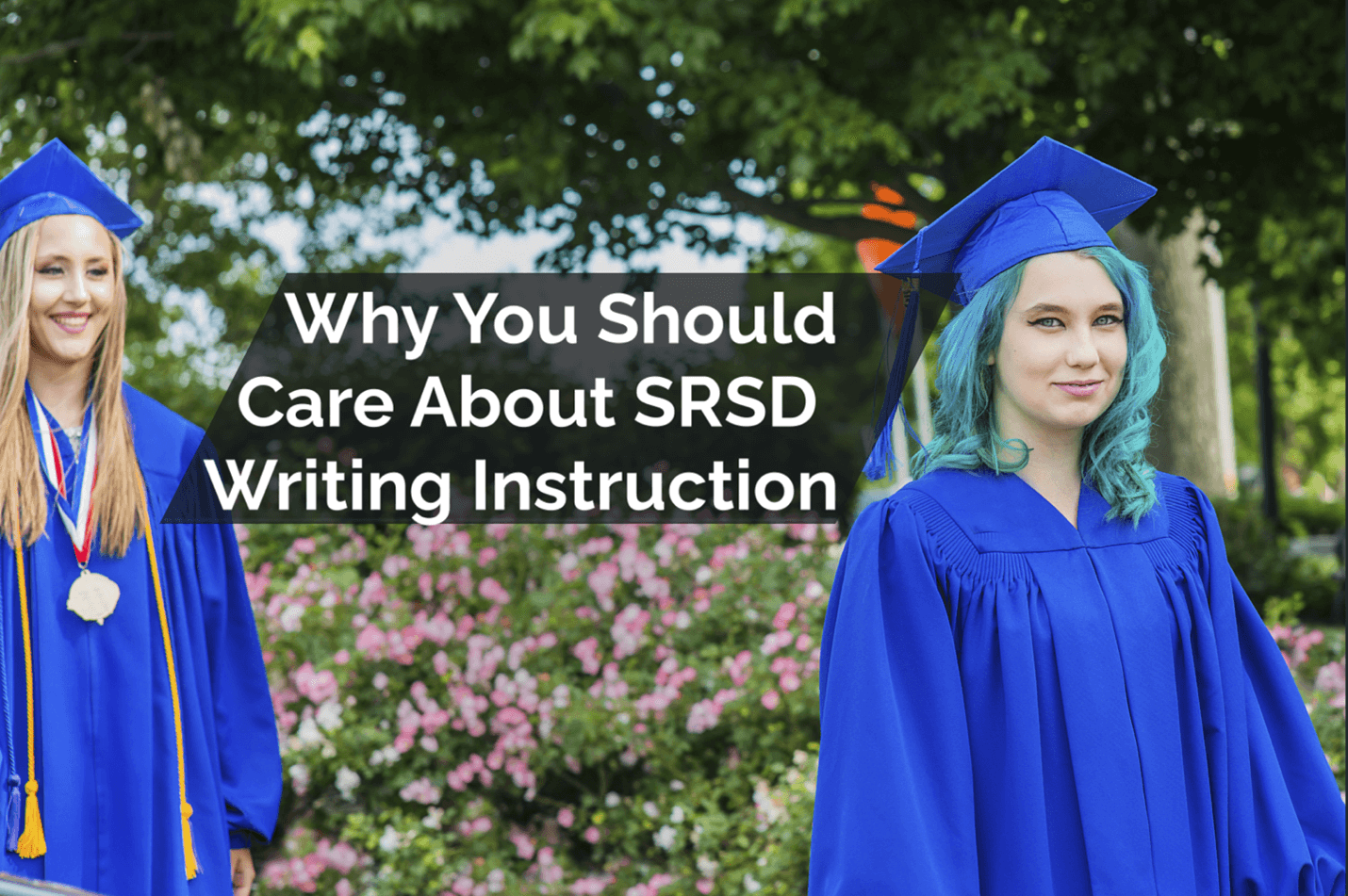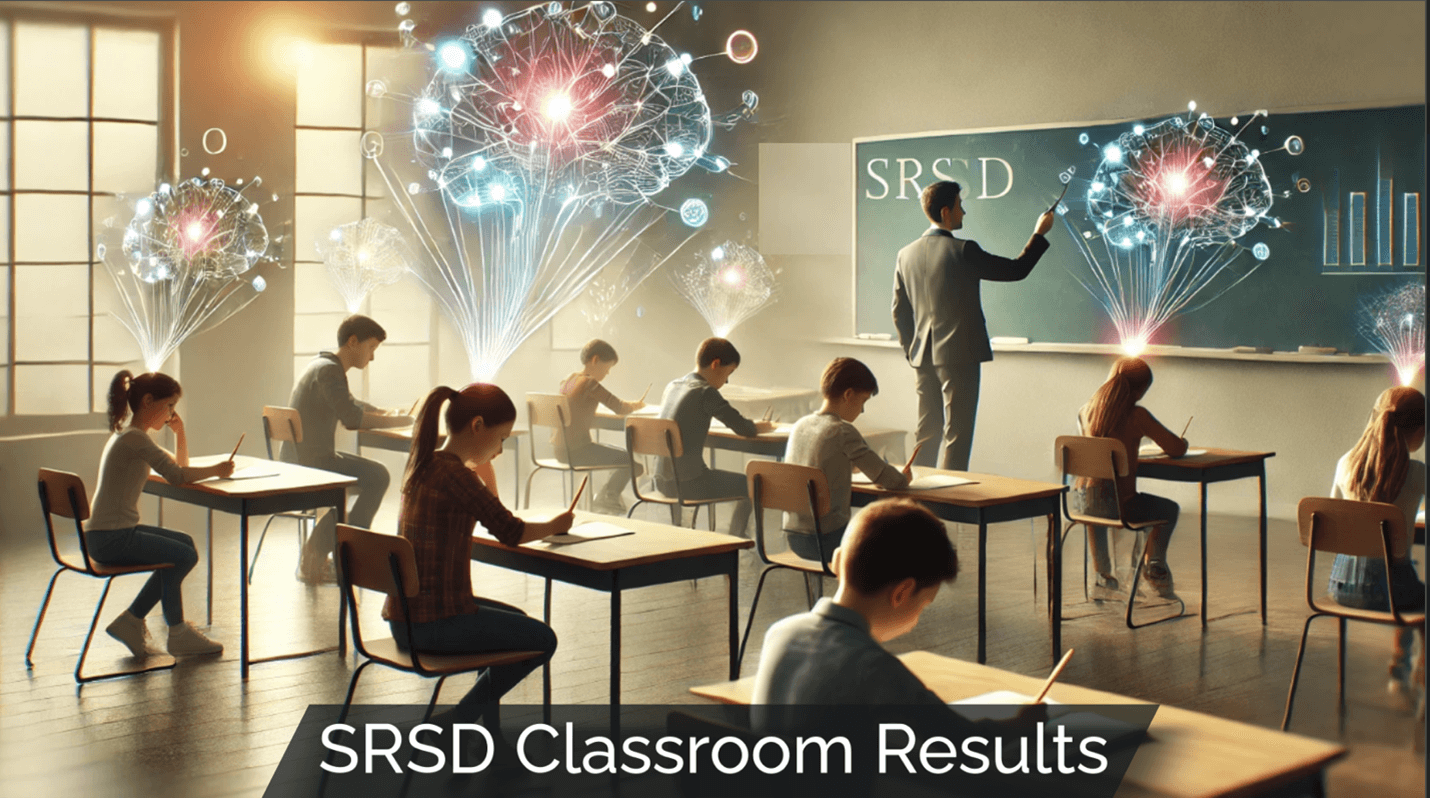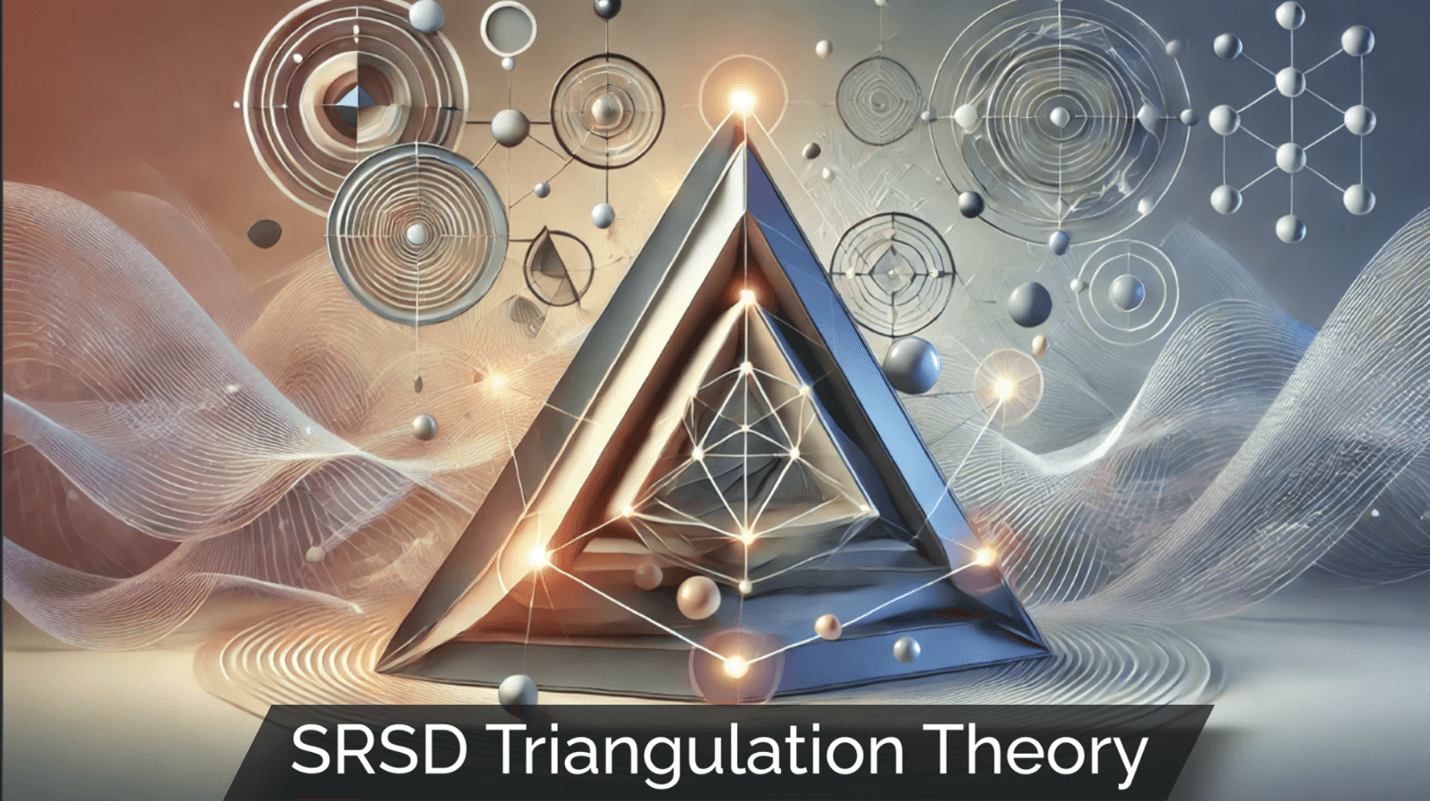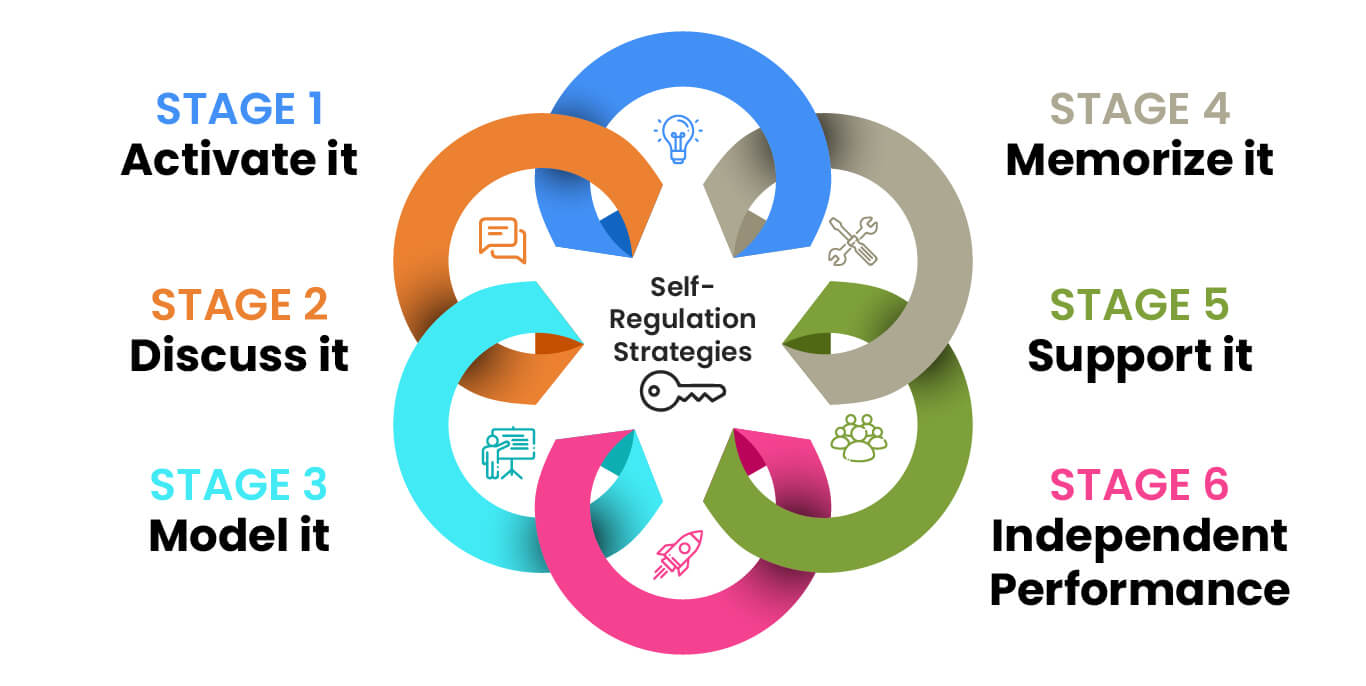Blog

SRSD Online Awarded Multi-Million Dollar Grant to Expand Evidence-Based Literacy with AI-Powered Support
SRSD Online and the Arizona Educational Foundation (AEF) have been awarded a major grant to lead a groundbreaking statewide initiative called Pathways to Evidence-Based Literacy. Pathways is aimed at strengthening literacy instruction in elementary schools through evidence-based practices and innovative artificial intelligence tools.

Literacy Performance Trends Demand a New Approach to Writing Instruction
Schools face an urgent challenge: students need stronger support in both reading and writing.
To help address the need for quality instruction, teachers should be supported with quality PD to teach reading and writing well. Research offers strong evidence that writing instruction plays a key role in improving both writing and reading outcomes, and the opposite is also true - reading instruction can improve reading and writing outcomes. We know that both need dedicated time, balance, and explicit instruction.

SRSD Australia: Evidence-Based Writing for Classrooms Down Under
Writing is not just an academic skill: it is how students learn, think, and share their ideas with the world. In Australia, as in many countries, writing outcomes have often lagged behind reading. Teachers have asked: How do we help students become confident writers? How do we prepare them for NAPLAN and beyond?
For more than 40 years, researchers have been refining an evidence-based approach to writing instruction that has powerful student impacts. The approach, known as Self-Regulated Strategy Development (SRSD), was developed by Dr. Karen Harris, and has helped teachers worldwide, Australia included.

Classroom Differentiation: Tailoring Learning for Every Student
We recently hosted a live Zoom conversation on our Facebook page between educators and Dr. Karen Harris about classroom differentiation. This blog brings together the key ideas Karen shared. It shows how SRSD, when applied within an effective learning environment, enhances the learning process through effective classroom strategies and makes the approach to differentiation both possible and manageable in real classrooms.

Explicit Instruction Writing Strategies: The Evidence Is Clear
Today’s classrooms are incredibly complex and demanding environments, and teachers face high expectations, limited time, and substantial pressure. With so much at stake, a clear, structured approach to teaching writing is essential. Importantly, the research aligns with this need.

Evidence-Based Writing Instruction: Why Explicit Teaching Still Matters for Writing
A recent roundup of new studies in learning science highlights the necessity of evidence-based writing instruction as a component of effective literacy instruction. It directly addresses how we teach writing, as well as why frameworks like Self-Regulated Strategy Development (SRSD) are essential. The same principles (explicit modeling, guided practice, and strategic self-regulation) are the foundation for both reading and writing success.

Reading Comprehension Strategies: How Writing Helps
Students need both reading and writing to be ready for school, work, and life. Both skills matter, and both require knowledge for success.
For many years, schools have taught reading and writing as if they were separate without adopting effective strategies for integrating the two. Reading comprehension often receives more time and attention, while writing is left behind.
Research shows this is a mistake. Reading and writing are closely connected. Improving one can lead to improvements in the other.

Writing Instruction Strategies That Last: What a New SRSD Study Tells Us
When a study lasts nearly two years and follows almost a thousand students, educators take notice. In 2025, Dr. Naymé Salas and her colleagues published one of the most extensive longitudinal studies ever conducted on Self-Regulated Strategy Development (SRSD). Their goal was simple yet ambitious: determining whether students could maintain SRSD-related writing gains over time. What they discovered was both encouraging and instructive, offering fresh insight into how explicit writing instruction shapes student growth long after a unit ends.
This blog looks at what they found in and how their results reinforce what SRSD Online has built into our long-term professional-learning model.

Writing Instruction Trends from the 1930s Onward, Discovery to SRSD
Over the past century, educators and researchers have been chasing the same elusive goal: How do we teach students to write well? Writing isn’t just a set of skills; it’s a complex act of thinking, problem-solving, and self-expression that requires a clear methodology to guide effective instruction. Yet, for much of the twentieth century, writing instruction focused narrowly on surface features like grammar, handwriting, and correctness rather than the cognitive and motivational processes that make writing meaningful.

Explicit Writing Instruction: SRSD Writing Lessons for Today’s Teachers
SRSD keeps Engelmann’s rigor but updates it for today’s classrooms by incorporating techniques from the Hochman Method. It adds what modern teachers and students need most: self-regulation, flexibility, and sustainability.

DIY Writing Lessons: Why Teachers Shouldn’t
Writing is high-stakes, especially in Australia, where students face the NAPLAN, a national standardized test given to students in Years 3, 5, 7, and 9, designed to measure core reading, writing, spelling, grammar, and math skills. For Australian teachers, the writing component of NAPLAN is particularly stressful. Students are asked to produce a whole piece of writing, often persuasive or narrative, within a strict time limit. The results are reported nationally, compared across states, and scrutinized by parents and policymakers. In other words, teachers feel the weight of those essays. The challenge is the same across countries: teachers know writing matters, but too often they lack high-quality, ready-to-use instructional resources.

How SRSD Meets the Standard of High-Quality Instructional Materials (HQIM)
Since SRSD (Self-Regulated Strategy Development) is not a core curriculum, it won’t appear on an HQIM adoption list. But here’s the critical part: SRSD meets the same level of rigor as HQIM and, more importantly, brings HQIM to life in classrooms.
This blog explores how SRSD aligns with HQIM expectations, how it strengthens provincial and state curriculum systems, and why it should be considered one of the strongest examples of Curriculum-Based Professional Learning (CBPL).

Why High Quality Instructional Material (HQIM) Matters in 2025
If you’ve been in a school meeting lately, you’ve probably heard the term High-Quality Instructional Materials (HQIM). At first, it may sound like another piece of education jargon. But HQIM isn’t just a passing trend. It represents a shift in how schools in the United States and Canada think about curriculum, equity, and student success.
This blog will explain what HQIM means, how it works in the U.S. and Canada, and, most importantly, why it matters to educators in everyday classrooms.

Practice-Based Professional Development: Elevate Your Growth
When we think about improving student writing, the research is clear: it’s not enough for teachers to attend one-day workshops or hear about “best practices.” What really moves the needle is professional development (PD) that is practice-based: PBPD that helps teachers learn, try out, reflect on, and embed instructional practices in their own classrooms, with support over time. This kind of PD aligns closely with the Self-Regulated Strategy Development (SRSD) model.

Argumentative Writing in Middle School: Helping Teachers Boost Outcomes
A recent peer-reviewed study found that teaching and student writing improve when teachers learn SRSD through online, practice-based professional development (PBPD) with coaching. The approach works in real schools with real constraints, and it helps students write stronger argumentative essays with clear structure, claims, evidence, and counterarguments.
This blog unpacks the study in teacher-friendly terms. You’ll see why SRSD works in middle schools, what online PD with coaching looks like, and how you can use these strategies to support your students.

Tier 3 Writing Intervention: How SRSD Makes It Doable
When Tier 3 succeeds, schools stop guessing and commit to evidence-based instruction. That means identifying a small set of high-leverage skills, choosing evidence-based strategies, setting clear goals, teaching explicitly, and checking progress frequently enough to make real-time adjustments. That description aligns directly with Self-Regulated Strategy Development (SRSD), a framework built for students who need individualized instruction, and it has decades of evidence to prove it works.

Tier 1 and Tier 2 Writing Supports: Where It Fits in MTSS
One of the biggest trends in schools right now is the use of MTSS (Multi-Tiered System of Supports). Teachers hear about it in meetings. Leaders bring it up in professional development. Parents even ask how it works. MTSS is not new, but more districts are leaning on it to guide literacy decisions.
Most conversations focus on reading and math, and writing is often overlooked. That is starting to change. Districts realize that students cannot succeed without strong writing and need a plan for how writing fits into Tier 1 and Tier 2.

Evidence-Based Writing Instruction: A Teachers’ Guide to SRSD
Teaching writing instruction is one of the most challenging jobs in the classroom.
You're not alone if you’ve ever wished for a reliable roadmap that helps students plan, draft, and revise confidently. The good news: such a roadmap exists. It’s called Self-Regulated Strategy Development (SRSD).
SRSD is more than a set of tricks. It’s a research-based approach that blends writing strategies with self-regulation skills so students learn what to write and how to manage themselves as writers. Over the past 40 years, SRSD has been tested in classrooms from kindergarten through high school, and the results are consistently impressive: students write more, write better, and feel more confident in their ability to communicate. It's not about handwriting. It's about communicating.

Writing Strategies for Elementary Students: A Framework That Works
In my last post, I explored five practical writing strategies for elementary students.
But many teachers ask the next natural question: “How do I pull all these strategies together into a system that really works?”
This post looks at a proven, research-based framework that organizes these strategies into a powerful sequence of instruction.

Writing Strategies for Elementary Students That Primary Teachers Can Use
Writing is one of the most important skills we teach in elementary school. It helps students organize their thoughts, communicate clearly, and build confidence in their own voices. Yet for many teachers, the writing process and instruction feel like an uphill climb. Some students love to talk but freeze when asked to put their ideas on paper. Others can generate ideas but struggle to give their writing structure. For many children, writing simply feels overwhelming.
The good news is this: research shows that explicit writing strategies make a big difference. When students learn how to approach writing step by step, they improve their papers and start to see themselves as writers.

Evidence-Based Writing PD in Canada: Funding Paths That Work
This blog is the third installment in my three-part series on SRSD in Canada, where I explore how evidence-based writing instruction is transforming classrooms across provinces. Together, these three blogs offer a roadmap for Canadian leaders: why writing instruction matters, how to implement SRSD across grade levels, and how to fund evidence-based writing PD using existing resources.

SRSD Implementation Strategies for K–12 in Canada
Canadian school boards face a demanding challenge: finding an evidence-based writing intervention that is flexible enough for kindergarten through high school, that works for both small rural classes and bustling urban schools, that respects bilingual realities, and that coaches teachers to deliver lasting change. Self-Regulated Strategy Development (SRSD) has established itself as a gold standard for explicit writing instruction across North America. The best part? With a strong implementation plan, Canadian leaders can see sustainable gains across every context and student profile, including those with learning disabilities.

The Science of Writing: Why Canadian Schools Need SRSD Now
Canada’s commitment to high-quality reading instruction has grown sharper over the past decade. New provincial standards for structured literacy and sweeping investments in educator training have started to tilt early reading outcomes in a positive direction. But while students can now sound out words and read with greater fluency, the fundamental task of effective communication through creativity and conveying ideas with clarity on the page remains a silent gap.
Literacy leaders, coaches, and consultants across Canada are beginning to recognize that reading-only reform falls short if classroom writing proficiency is left to chance. The strongest research on writing, much of it led by Karen Harris and Steve Graham, delivers a simple, powerful message: effective writing isn’t a moonshot or a gift, but something that can be taught, step by step, using methods as thoroughly studied as those behind the Science of Reading.
SRSD (Self-Regulated Strategy Development) now enters as the structured writing counterpart to structured literacy: explicit, evidence-driven, developmental, and completely adaptable to Canadian classrooms from coast to coast, emphasizing effective writing as a core component.

Evidence-Based Writing Solution Hiding in Plain Sight: SRSD
Schools are grappling with a persistent challenge across the U.S., Canada, and beyond: how to improve student writing reliably. Despite decades of initiatives, countless curricula, and workshop-style programs, writing proficiency remains among the most elusive instructional outcomes. The stakes couldn't be higher for instructional coaches, curriculum directors, and school administrators. Writing is foundational for academic success, career readiness, and critical thinking yet it is notoriously difficult to teach effectively at scale.
But what if there were a model that not only improved writing quality dramatically, but also supported students' motivation, self-regulation, and long-term independence as writers? And what if that model was already validated across 15 years of meta-analytic research?

The Science of Writing Meets the Science of Learning: A Case for SRSD
You're not alone if you're a teacher caught in the crossfire between phonics mandates and comprehension goals. The current landscape of literacy instruction is being shaped by two powerful movements: the Science of Reading and the Science of Learning, both of which rely heavily on research. While each contributes essential insights, they often focus on what we teach before students can read or write fluently. But what comes after? What helps students apply their foundational skills in real-world reading and writing tasks? Enter the Science of Writing, specifically, Self-Regulated Strategy Development (SRSD).
This blog explores how SRSD, an evidence-based writing framework, seamlessly aligns with the cognitive principles underpinning the Science of Learning and helps solve one of literacy education's most pressing problems: transfer, by drawing on extensive research in the field. We'll also draw on a compelling essay by Harriett Janetos, "The Science of Reading Meets the Science of Learning: Fast-Tracking Phonics," which underscores the risks of over-teaching foundational skills at the expense of meaningful literacy experiences.

AI in Writing Instruction: What SRSD Teachers Should Know (And Why I’m Proceeding with Caution)
The education world is buzzing with talk of AI integration. From personalized learning to automated feedback, the promises are bold: smarter instruction, more engagement, greater equity. But with every new wave of innovation comes a quiet question we can’t afford to ignore: How do we move forward without losing what matters most? For those of us committed to explicit writing instruction through Self-Regulated Strategy Development (SRSD), the question isn’t whether to engage with AI. The question is how.
And for me, the answer right now is: with curiosity, yes. But also with caution.

Building Lasting Change in Writing Instruction: How Coaches Transform Classrooms into Catalysts for Change
Both Training and Instructional Coaching Matter in SRSD Implementation.
At SRSD Online, we know that delivering outstanding professional development is just the beginning. Real, lasting change in writing instruction happens when high-quality training is paired with strategic, skillful instructional coaching.
Our Train-the-Trainer Instructional Coach model was built precisely for this reason: teachers need both expert instruction from expert coaching support to confidently bring Self-Regulated Strategy Development (SRSD) into their classrooms — and to sustain it over time.

Writing Crisis in Schools and Your Evidence-Based Writing Solution
Ask any educator: Can your students write well?
The honest answer, if we're being data-driven and grounded in reality, is “no.” This is not just an academic problem; it’s a national crisis with long-term consequences for college, career, civic participation, and equity. Yet writing remains the most under-prioritized, inconsistently taught, and misunderstood subject in K–12 education.
But what if we told you that we already have a solution that’s been extensively validated by over 120 studies and produces the largest gains in student writing outcomes of any instructional approach?
That solution is Self-Regulated Strategy Development (SRSD), and it's time more districts knew about it.

What Is SRSD? The Writing Framework Educators Can’t Stop Talking About
Welcome to a deep dive into a framework that’s quietly transforming writing instruction in classrooms across the globe: Self-Regulated Strategy Development, or SRSD.
Suppose you’re a teacher, administrator, curriculum leader, or simply someone who cares about how students learn to write. In that case, this post is your fast track to understanding what makes self-regulated strategy development (SRSD) so powerful—and so different. Backed by more than 40 years of rigorous research, SRSD is not a prepackaged writing curriculum. It’s not a trendy set of writing prompts or a series of disconnected mini-lessons. SRSD is a flexible, evidence-based framework that helps students not only learn to write better but also learn to manage themselves as writers.
In this post, we’ll explore:
• What SRSD is (and what it’s not)
• Why self-regulation is the secret sauce
• What it looks like in real classrooms
• The dramatic impact on student writing and motivation
• How teachers and administrators make it work in their schools

Not Enough Time for Teaching? SRSD Online Makes Writing Time Obsolete
In today’s schools, the clock is the tightest constraint. Teachers are pulled in every direction, managing pacing guides, assessments, intervention plans, classroom management, IEP goals, MTSS documentation, curriculum mandates, and professional development, all of which contribute to their workload. Add to that the constant pressure to raise student performance and enhance student learning, and it’s no wonder that classroom instruction often ends up being the first thing to fall off the schedule.
That’s where SRSD Online changes everything.
Our approach isn’t just evidence-based and classroom-tested. It’s designed to respect educators’ time while still delivering exceptional results in student writing outcomes. This blog breaks down the problem with time in today’s classrooms and explains how our version of SRSD addresses and solves that issue.

The SRSD Online Difference: Why There’s Nothing Else Like It in Writing Instruction
This blog will unpack the SRSD Online advantage: why there’s nothing like us in the market, and why thousands of educators have trusted us to guide their teams toward lasting, measurable growth in writing instruction.

High School Writing Instruction: Evidence-Based Strategies
When high school students struggle with writing—especially informative essays—it can limit their success across all subject areas, not to mention their college and career readiness. For students with learning disabilities (LD), the challenge of teaching writing is even more significant. Fortunately, a new 2024 study by Ray et al. in Learning Disability Quarterly delivers exciting news: Self-Regulated Strategy Development (SRSD) can dramatically improve the writing performance, self-efficacy, and strategic thinking of high school students with and at- risk for LD. And it works in just nine weeks.

Genre Writing: Our Comprehensive, Easy-to-Use Student Writing Course
Educators often face challenges when teaching young students to write strong opinion essays: How can they balance the need for structure while fostering creativity and developing a unique voice? How can they ensure every child feels confident taking a position and defending it with solid reasoning and explanations? How can teachers help students develop independence and achieve genuine mastery, ensuring the writing process is meaningful and engaging? Explore how our SRSD (Self-Regulated Strategy Development) Online course meets all of these challenges head-on.

Inclusive Learning: Resources for Students with Disabilities
Teachers nationwide are looking for writing instruction that works—especially for students who learn differently. Self-Regulated Strategy Development (SRSD) has been studied extensively with students with disabilities, and the results are consistently strong. Whether you teach students with autism, ADHD, learning disabilities, or other health impairments, this blog provides a quick guide to the research that shows how SRSD supports writing achievement, independence, and confidence in inclusive classrooms through inclusive pedagogy.

What Is SRSD? An Educator’s Perspective
As many know, teaching children to write well is often daunting. Many educators feel underprepared to support their students’ writing development. Meanwhile, districts nationwide wrestle with budgets and time constraints, leaving the crucial writing skill all too often sidelined. In that environment, it is no surprise that many students finish grade after grade without the confident, fluid writing abilities they need to succeed. However, more schools are discovering a robust methodology called Self-Regulated Strategy Development (SRSD). This approach combines explicit instruction in writing strategies with metacognitive training, turning hesitant writers into capable authors who can plan, draft, and revise independently and enthusiastically.

Using Writing as a Tool for Improving Reading and Learning: Strategies to Integrate Writing into Reading Activities
Writing is often viewed as a complex process that demands attention to multiple facets of language—vocabulary, grammar, mechanics, and organization—while requiring cognitive skills such as planning, revising, and self-regulation. But Dr. Hebert sees writing as far more than an essential academic skill or an end unto itself. Writing, in fact, actively promotes a student’s growth in reading and overall learning.

Writing Strategy Questions: SRSD Has Your 10 Biggest Answers
Educators across the globe share a common hurdle: guiding students to become confident, capable writers. Writing instruction and composition frequently get overshadowed by reading curricula, tested content areas, and the day-to-day responsibilities of a busy classroom. School leaders, instructional coaches, and curriculum directors often find themselves fielding the same questions: “How do we build a cohesive writing approach across grade levels? How can we effectively train staff without overwhelming them? And how do we make sure any new initiative survives teacher turnover or limited PD time?”
This blog post addresses many of those recurring questions about structured writing instruction. You’ll discover how an evidence-based framework—Self-Regulated Strategy Development (SRSD)—offers practical, sustainable solutions. While there are multiple SRSD providers, we’ll focus on how SRSD Online’s methods and professional development model can solve the key problems that administrators and teacher leaders frequently raise.

Early Learner Writing Strategies Every Teacher Should Know
This blog explores how SRSD in grades K–1 establishes the groundwork for stronger writing skills in the future. It explains how strategies like TREE—and their adaptations for informative and narrative writing—can be introduced in a child-friendly manner using proven early learner writing techniques.

The Science of Writing: Karen Harris & Peter H. Reynolds on SRSD
SRSD researcher Karen Harris and renowned children's author Peter H. Reynolds recently joined a group of enthusiastic educators for a webinar on SRSD (Self-Regulated Strategy Development) and the science of writing. The virtual conversation brought together two celebrated figures in the world of literacy, each bringing a unique perspective: Dr. Karen Harris, whose groundbreaking work established SRSD as a robust, evidence-based instructional method, and Peter H. Reynolds, an acclaimed author and illustrator whose passion for empowering learners through creativity and self-expression has inspired teachers and students worldwide.

SRSD in Action: Five Educators Share Their Story
When schools implement a new instructional approach, the true test of its success often comes from the educators who carry it forward daily. In this post, you will hear from five educators—each at a different level of school leadership—who have adopted SRSD and seen notable outcomes in their contexts. They share candid reflections on why they embraced SRSD, how they introduced it to their staff or students, and the powerful shifts they have witnessed. From Canada to the U.S., from kindergarten to middle school, these stories illustrate the potency of explicit strategy instruction interwoven with self-regulation skills. They also remind us that teaching writing is not just about mechanics or formats but about nurturing a sense of purpose, creativity, and confidence in every learner.

8 Evidence-Based Writing Strategies for Student Success
Writing is one of the most critical skills students will develop during their education. It empowers them to communicate ideas effectively, engage in critical thinking, and express creativity. However, strong writing skills don’t emerge overnight—they require consistent practice, strategic instruction, and a supportive learning environment. Teachers play a crucial role in shaping young writers by implementing evidence-based strategies that enhance writing proficiency. When students receive structured, engaging, and meaningful writing instruction, they develop confidence and competence that extends beyond the classroom and into all aspects of their academic and personal lives. Below are key strategies that research has shown to be highly effective in developing strong writers.

Student Writing Success: Elevating Skills in The Classroom
Teaching K-12 students to write effectively is a complex challenge. How do you help students understand the unique structure of each genre? How do you ensure they have the strategies to plan, draft, revise, and edit successfully, no matter the type of writing task at hand? How do you nurture independence, self-regulation, and motivation so they can eventually write confidently and skillfully on their own?
That’s easy: Our SRSD Online course provides a unified framework for teaching Opinion/Persuasive, Informative/Explanatory, and Narrative writing. It covers each instructional stage thoroughly, supports you with professional development tools, and integrates strategies and self-regulation in all genres. The course is easy to learn and implement, helping students develop independence, motivation, and strong writing skills that transfer across different writing tasks and beyond the classroom.

Writing Curriculum: Embedding SRSD for a Seamless Fit
Imagine walking into your classroom and seeing students writing confidently and clearly and applying strategies grounded in the science of writing. They are not just stringing together sentences but developing organized ideas, engaging with genre-specific structures, and mastering various writing skills. This vision seems distant for many teachers — particularly if their current writing curriculum is limited to surface-level skills like spelling and grammar.
Yet, research about writing and best practices in writing instruction suggest that significant transformation is possible. Enter Self-Regulated Strategy Development (SRSD): a flexible, evidence-based approach that enhances and supplements your current instructional materials. Through SRSD for writing, students gain the strategies and self-regulation techniques they need to excel in any writing course or assignment.

Writing Strategies for Teachers: Why Writing Matters
Writing is more than a school subject; it’s a skill that shapes how students connect ideas, analyze information, and communicate effectively. This blog highlights a call to action for teachers: writing instruction must be reimagined as a priority across all grade levels and disciplines.

Writing Strategies for Elementary Students: SRSD for Grades 1 and 2
Writing is a critical skill that is the foundation for academic success, personal development, and future career opportunities. Despite its importance, writing instruction, including instructional opportunities at the early grade levels, is often lacking. There have been ongoing debates and questions about whether students should learn transcription and oral language skills before learning skills for writing. However, “Yes, They Can…” demonstrates that combining skills with effective writing strategies and instruction yields remarkable results, even in first and second-grade classrooms.

Self-Modeling: Unlocking Student Potential with Video Self-Modeling and SRSD
Writing can be a challenging task for many students, particularly those with learning disabilities (LD) or autism spectrum disorders (ASD). Traditional methods of teaching writing often fall short of addressing the unique needs of struggling writers. However, a study by Katie M. Miller and Mary E. Little, published in Exceptionality: A Special Education Journal (2017), provides compelling evidence that combining Self-Regulated Strategy Development (SRSD) with Video Self-Modeling (VSM) can significantly improve students' writing skills. This blog will explore the key findings from the study and offer practical steps for implementing VSM alongside SRSD in your classroom.

SRSD Writing Reinvented: The Science of Writing Takes Flight in 2025
SRSD Online is excited to unveil our fully redesigned teacher training courses and website, offering educators and schools worldwide access to evidence-based writing instruction grounded in the Science of Writing. Our transformation is focused on delivering the most effective, engaging, and accessible professional development in Self-Regulated Strategy Development (SRSD). Whether you're an experienced SRSD practitioner or exploring evidence-based writing instruction for the first time, SRSDOnline.com is your destination for innovative resources, groundbreaking training, and cutting-edge materials to transform education, teaching, and writing outcomes in your school or district.

Teaching Persuasive Writing: SRSD Unlocks Student Potential
Teaching persuasive writing in today’s classrooms presents a significant challenge, particularly when integrating the close reading of informational texts. The Common Core State Standards (CCSS) have raised the bar, requiring 4th- and 5th-grade students to craft logical, evidence-based arguments. These expectations demand that students read closely and transform what they read into structured, compelling essays. This task is daunting for many students, especially those experiencing writing difficulties. The complexity of persuasive writing—requiring clear reasoning, relevant evidence, and strong organization—leaves many students struggling to meet the standards.
The hurdles are equally significant for teachers, as they must find effective examples to demonstrate writing strategies. A 2012 survey revealed that many teachers feel inadequately prepared to teach writing effectively, especially in low-income schools where resources are limited, and students need additional barriers. Balancing the dual demands of reading comprehension and writing proficiency within classroom time constraints is a perennial concern. Enter Self-Regulated Strategy Development (SRSD): an evidence-based approach that empowers struggling writers and meets today’s rigorous academic demands.

Emotional and Behavioral Disorder Intervention: Key Strategies for Effective Support
Students with emotional and behavioral disorders (EBD) often face substantial barriers to developing effective writing skills. The self-regulated strategy development (SRSD) model is widely recognized as the only evidence-based writing intervention for students with EBD.

At-Risk Students: Evidence-Based Writing Interventions
Writing effectively is essential for academic success, workplace readiness, and social engagement, promoting equity for all learners. Despite its importance, writing often receives less instructional time compared to other core areas like reading or math, leaving many students—particularly those in the community with learning disabilities (LD)—struggling to develop the necessary skills.

Writing Communities: Supporting Students as Writers and Thinkers
A Revised Writer(s)-Within-Community Model of Writing, writing communities are social environments where individuals engage in writing to achieve shared goals and purposes. These communities include the writers and collaborators, mentors, teachers, and readers who interact within a framework shaped by shared norms, tools, and actions. This blog will explore why writing communities are beneficial for teachers.

The Science of Writing: Integrating Reading and Writing for Enhanced Literacy
Reading and writing are often taught as separate subjects, but research consistently reveals that these two literacy skills are profoundly interconnected and mutually supportive.

A Writing Course Teachers Should Care About
When we think about teaching writing, it’s often easy to focus on grammar, spelling, or sentence structure and overlook the depth of thought and organization that go into a truly effective writing process. Many teachers report being unprepared to teach writing effectively despite recognizing its importance for students' academic success and life skills. This is where Self-Regulated Strategy Development (SRSD) shines as a game-changing instructional approach.

Research-Based Writing Instruction: 7 Reasons Why It’s Not the Best
When educators look for the most effective teaching practices, it’s essential to differentiate between two commonly used terms: research-based and evidence-based. Although they sound similar, they have distinct meanings in educational contexts, and understanding these differences can significantly impact student learning outcomes. At SRSD Online, we emphasize that SRSD is an evidence-based writing intervention. But what does that mean, and how does it set SRSD apart from other research-based writing programs and approaches?

Writing Interventions: Bridging the Gap in Language Education
ffective writing interventions are essential in bridging gaps within language education, especially for students facing challenges in developing writing skills. These strategic approaches, like Self-Regulated Strategy Development (SRSD), go beyond standard instruction by providing targeted support through step-by-step guidance, structured exercises, personalized feedback, and even technology integration to support diverse learning needs. By focusing on cognitive skills (such as organizing thoughts and developing ideas) and metacognitive skills (like self-reflection and strategy selection), these interventions empower students—including those with learning disabilities or English language learners—to communicate confidently and clearly. Writing interventions foster critical thinking, self-expression, and resilience, helping students improve their writing proficiency and build confidence, ultimately setting them up for tremendous academic success and more effective communication in all areas of life.

How Evidence-Based Writing Boosts Student Success
Evidence-based writing instruction is crucial for student success because it relies on proven strategies that improve writing skills, engagement, and confidence across diverse student populations. Educators can use proven research methods to deliver targeted, practical support that helps students understand and master the writing process, leading to more decisive critical thinking, communication, and self-regulation skills. Evidence-based approaches also ensure consistency and quality in instruction, giving students a reliable foundation to tackle various writing tasks and empowering them with skills that extend beyond the classroom and into lifelong learning.
Based on decades of data and research, Self-Regulated Strategy Development (SRSD) offers K-12 students evidence-based writing strategies, empowering them to become effective writers across various genres.

Writing Strategies for Students: Tips for Better Grades
Self-Regulated Strategy Development (SRSD) is the most researched and evidence-based writing process globally. Developed by Dr. Karen Harris over decades of research and classroom application, SRSD has consistently proven highly effective for students of all abilities. In this post, we’ll explore why SRSD has earned its place as the “king of the hill” in writing strategies and why it’s more than just a quick fix for turning students into great writers.

Enhance Student Writing: The Role of Reading for Writing
A 2018 meta-analysis "Reading for Writing" explored 54 experiments, analyzing 5,018 students' writing performance after reading interventions. These findings have broad implications for classroom instruction, especially in light of the strong statistical results showing the efficacy of reading interventions on writing improvement. The meta-analysis also suggests that writing and reading are deeply connected, building on standard cognitive processes. This blog will discuss the findings and how teachers can apply these insights to improve students’ writing.

Mastering the Writing Process: Tips for Success
According to the National Assessment of Educational Progress (NAEP), only 27% of 8th and 12th graders are proficient in writing. This statistic reveals a significant gap in writing proficiency across the nation—a gap that many traditional writing approaches, despite extensive research, have struggled to close. However, an evidence-based solution is 4.5 times more effective than conventional methods: Self-Regulated Strategy Development (SRSD).
SRSD takes students beyond the basic steps of the writing process, guiding them through every stage with intentional writing strategies that build independence, confidence, and enthusiasm. This blog explores what makes SRSD so successful, and how it transforms the writing process for students.

Common Core Writing Standards: A Guide Using SRSD
As educators across the United States work to meet state, district, and national academic testing standards, it’s crucial to have an instructional framework that aligns with these rigorous expectations and promotes education, literacy, and appreciation of history. Self-Regulated Strategy Development (SRSD) offers a research-backed approach to writing instruction that incorporates writing interventions, not only boosting students’ writing abilities but also seamlessly aligning with essential academic standards, such as the Common Core State Standards (CCSS), through research to build and present knowledge, while integrating effective pedagogy. In this blog, we’ll explore how SRSD integrates with these standards and provides teachers with the tools to help students succeed academically while meeting testing and curriculum goals by integrating Common Core writing instructions and ideas.

Classroom Writing Results: The Evolution of SRSD
The name Self-Regulated Strategy Development (SRSD) emerged in 1992 after a series of revisions to better capture the core components of the instructional model. This final name change underscored the vital role of self-regulation strategies—such as goal setting, self-monitoring, and self-reinforcement—that SRSD teaches students.

SRSD Writing Strategies: Theoretical Integration
This blog will continue the SRSD story and how Karen Harris integrated multiple educational theories, including behavioral theory, cognitive psychology, and sociocultural theory. This process, known as theoretical triangulation, allowed SRSD to become a comprehensive instructional model for teaching writing, incorporating various perspectives through modeling techniques and educational strategies, now known as the Science of Writing.

The History of SRSD: Evolution of the Science of Writing
The Self-Regulated Strategy Development (SRSD) model is now widely recognized as the most effective approach for teaching writing. Still, its successful implementation requires a deep understanding of its principles and strategies. Understanding the history of SRSD and the journey that led to its creation provides valuable insight into how SRSD became a powerful educational model deeply grounded in theoretical research and practical application.







